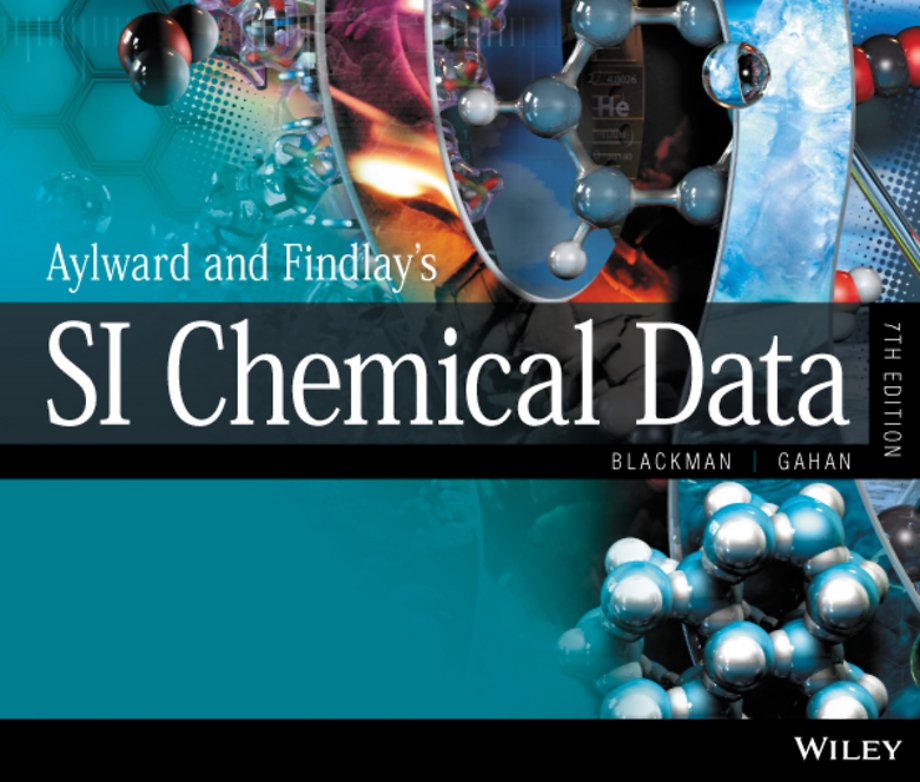Aylward and Findlay′s SI Chemical Data 7e
Samenvatting
SI Chemical Data, 7th edition, is a supplementary text for students in undergraduate chemistry courses and in high school subjects specialising in chemistry. The chemicals included have been chosen specifically to cover those typically studied in these courses. New to this edition The adoption of the Globally Harmonised System of Classification and Labelling of Chemicals (GHS) has necessitated extensive revision of the hazard codes that were elaborately detailed in earlier editions. Now, instead of listing individual hazard codes for each element and chemical, the GHS is explained in detail, along with how to interpret a material safety data sheet (MSDS). This information provides students with the skills to discover and understand the hazards that may be associated with the chemicals they use. In addition to this major change, the order of the tables of data has been rearranged to systematise the sequence of presentation. The values of the fundamental constants have been updated, data have been updated based on the most recent published compendia and, in some cases, data have been presented in different formats to those in previous editions. New tables have been included to provide data and information on: common radioisotopes common amino acids the miscibility of common solvents 1H chemical shifts of residual protons in deuterated NMR solvents 1H and 13C chemical shifts of common solvents common biological buffers the potentials and conversion factors for common reference electrodes.
Specificaties
Inhoudsopgave
<p>Section 1: General: Physical constants, units and symbols<br /> 1 The International System of Units (SI) 3<br /> 2 SI derived units commonly used in chemistry 3<br /> 3 Fundamental constants (revised 2010) 4<br /> 4 Common conversion factors 4<br /> 5 The Greek alphabet 5<br /> 6 Numerical prefixes 5<br /> 7 Decimal fractions and multiples 6</p>
<p>Section 2: The elements<br /> 8 Ground state electronic configurations of the elements 9<br /> 9 Properties of the elements 14<br /> 10 Properties and applications of some common radioisotopes 22<br /> 11 Electronegativities of the elements (Pauling scale) 24<br /> 12 Enthalpies of melting, vaporisation and atomisation of the elements 25<br /> 13 First ionisation enthalpies (Ei1) of the elements 27<br /> 14 Successive ionisation enthalpies (Ein) of the elements 29<br /> 15 Electron affinities (Eea) of the elements 31</p>
<p>Section 3: Inorganic compounds<br /> 16 Properties of elements and inorganic compounds 35<br /> 17 Some crystal forms 84<br /> 18 Shapes of some molecules and ions 87<br /> 19 Bond lengths 88<br /> 20 Average bond enthalpies 89<br /> 21 Lattice enthalpies of ionic crystals 89<br /> 22 Stability constants of complex ions 90<br /> 23 Solubility products 91</p>
<p>Section 4: Organic compounds<br /> 24 Some important organic functional groups 95<br /> 25 Properties of organic compounds 97<br /> 26 Properties of amino acids 120<br /> 27 Properties of solvents 123<br /> 28 Miscibility of solvents 125<br /> 29 Boiling temperature elevation and freezing temperature depression constants 126<br /> 30 Critical constants and triple points 127</p>
<p>Section 5: Spectroscopic data<br /> 31 The spectral energies 131<br /> 32 Infrared absorption frequencies 131<br /> 33 NMR chemical shifts 132<br /> 34 Chemical shifts and multiplicities of residual protons in deuterated NMR solvents 132<br /> 35 NMR chemical shifts of common solvents in a variety of deuterated NMR solvents 133<br /> 36 Important NMR–active nuclei 137<br /> 37 Common singly charged (z = 1) fragments detected by mass spectrometry 137</p>
<p>Section 6: Properties of acids and bases<br /> 38 Dissociation constants of acids and hydrated metal ions 141<br /> 39 Aqueous concentrations of common acids 142<br /> 40 Common acid base indicators 143<br /> 41 Common buffers 143<br /> 42 Buffering ranges of some common biological buffers (0.1 m) 144</p>
<p>Section 7: Properties of aqueous solutions<br /> 43 Ionic properties of water 149<br /> 44 Molar conductivities of aqueous solutions at 298 K 149<br /> 45 Ionic molar conductivities at<br /> infinite dilution at 298 K 149<br /> 46 Solubility of gases in water 150<br /> 47 Vapour pressure and density of water and mercury at different temperatures 150<br /> 48 Densities of aqueous solutions at 298 K 151</p>
<p>Section 8: Electrochemistry<br /> 49 Standard electrode potentials and redox equilibria in aqueous solution 155<br /> 50 Potentials of common reference electrodes at 298 K 159<br /> 51 Conversion factors (mV) between common reference electrodes in acetonitrile 160<br /> <br /> Section 9: Appendices<br /> 52 Globally Harmonised System of Classification and Labelling of Chemicals (GHS) 163<br /> 53 Interpretation of a material safety data sheet (MSDS) 165<br /> 54 Common formulae and definitions 173</p>
<p>References 176<br /> Index 181</p>

